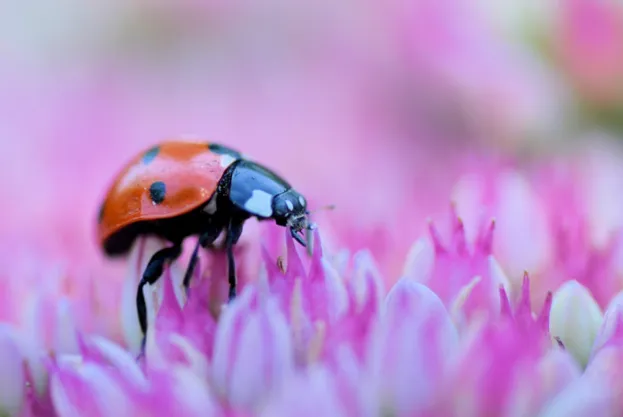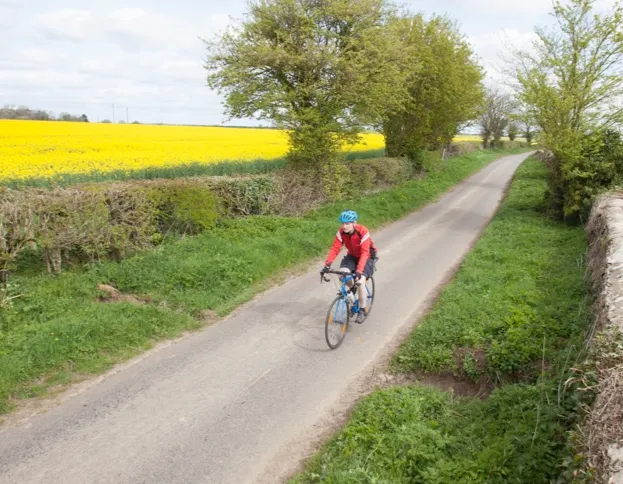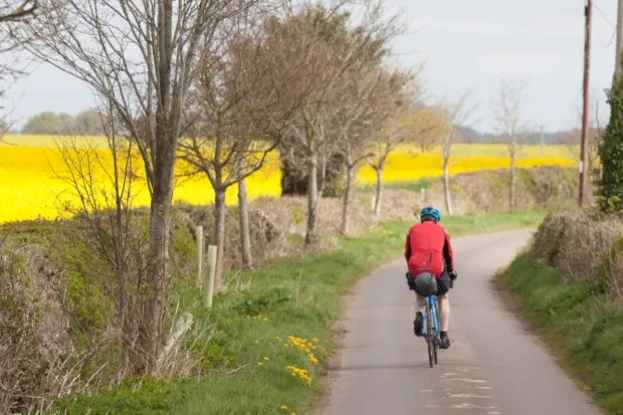James will be cycling from Devon to the north of Scotland at the same speed as spring, taking in some 15 different seasonal wildlife spectacles along the way.
Follow James' progress on Facebook and Twitter, and send us news of your own favourite spring events.
How did James come up with the idea?
I can’t now remember how we got onto the subject, but at some point on a random weekday night in mid-January, I found myself telling my partner that spring moves north at 2mph.
“What, so you could walk at the same speed as spring?” she asked.
I thought for a minute. I pointed out that not only does spring travel in a straight line (which a person would find difficult to do, because roads and footpaths don’t), but also does it 24 hours a day with no need to sleep or eat. Or take pictures. So, no, you couldn’t walk north with spring. I doubt even the hardest ultra-marathon runner in the world could manage it for 600 miles.
In fact (I was suddenly getting energised by the subject), spring would cover – quick calculation – 45.6 miles a day, which would mean – more number crunching – the length of mainland Britain in approximately 13 days.
“So,” I concluded, “you couldn’t walk north with spring – but you could cycle it.”
“Well, why don’t you?” came the response.
I could think of all sorts of reasons, not least that no sane editor of a magazine with an editorial team of just nine would allow a member of staff two weeks off to follow spring north on a bicycle. More fool me.
As it turned out, Sheena (BBC Wildlife's editor) loved the idea and said yes, almost as a colleague pointed out, a little too readily, as if she couldn't wait to get rid of me. “If you really want to do it,” she added, tacitly suggesting that it wasn’t something any normal person would contemplate.
The idea that spring moves north at 1.9mph is, of course, a touch ludicrous. It comes from spring sightings sent in by members of the public to Nature’s Calendar. Researchers plot events such as the appearance of frogspawn or oak trees coming into leaf on a map, and work out – for each event – how fast it is travelling through the country.
In 2015, the speeds at which the following spring events travelled north were recorded thus:
- Frogspawn: 1mph
- Oak leaves: 1.3mph
- Orange-tip butterflies: 1.4mph
- Hawthorn flowering: 1.9mph
- Swallows: 2.4mph
- Hawthorn leaves: 6.3mph
- 7-spot ladybirds: 6.5mph

Professor Tim Sparks, a statistician at Coventry University, then calculated an average for all of them of 1.9mph. In 2016, by the way, spring was much, much slower, decelerating to just 1.2mph, or a leisurely 28 miles a day, but the faster figure is more in line with the general trend of recent decades – the overall average for 1988-2015 was 1.8mph, for example.
In order to make my task a little easier, I’m not starting my journey at Land’s End, as is traditional for a south-north cycle ride of mainland Britain.

Instead, for no particular reason other than it allows me to visit the (I’ve heard) spectacular heronry at Powderham Castle, I’m taking a train down to Dawlish Warren, at the mouth of the River Exe in South Devon, and from there I will then visit these reserves with (in most cases) a particular target species in mind:
21 April, RSPB Exminster Marshes, near Exeter: Cetti’s warblers
22 April, RSPB Ham Wall, Somerset Levels: Booming bitterns
23 April, RSPB Highnam Woods, near Gloucester: Nightingales
24 April, RSPB Coombes Valley, Staffordshire: Pied flycatchers and redstarts
25 April, RSPB Dove Stone, Peak District: Ring ouzels
26 April, RSPB Leighton Moss, Lancashire: Breeding marsh harriers
27 April, RSPB Geltsdale, North Pennines: Breeding lapwings
28 April, RSPB Baron’s Haugh, near Motherwell: Sand martins
30 April, Rothiemurchus Estate, Cairngorms: Pine martens
1 May, RSPB Loch Garten, Cairngorms: Lekking capercaillies and fishing ospreys
2 May, Chanonry Point, Moray Firth: Bottlenose dolphins
2 May, Loch Fleet NNR: Ospreys
3 May, RSPB Forsinard, Flow Country: Breeding waders and possible hen harriers
3 May, RSPB Dunnet Head, near Thurso: Breeding seabirds
I’ll be posting pictures and videos on our Facebook page and our Twitter feed, and you can follow my progress there.
But we want to hear your stories, too. Post your sightings to these social media sites to let us know which spring events you are taking in and share your stories with us and other readers.

Main image: James Fair will be following spring. © Tom Gilks/BBC Wildlife
